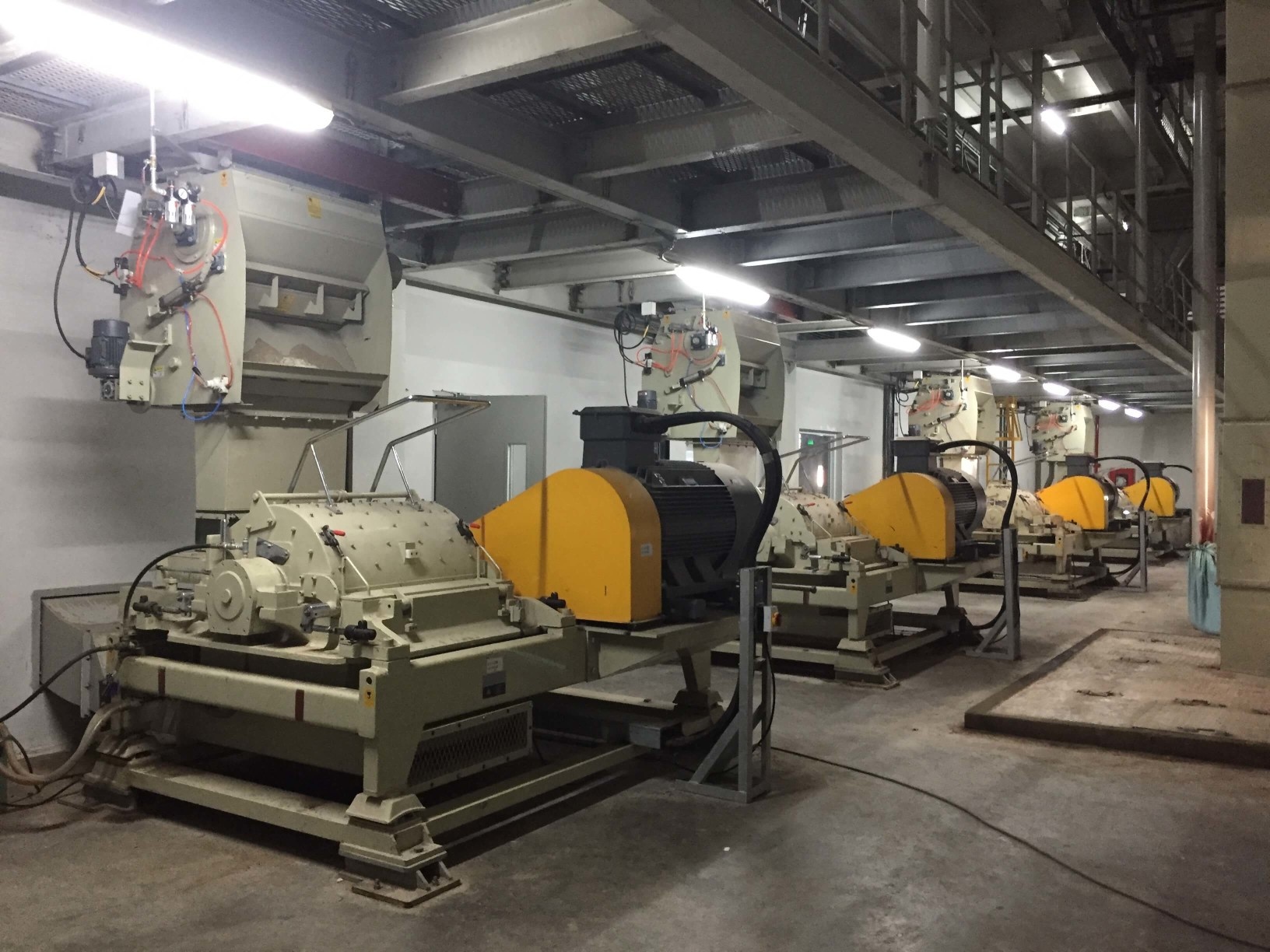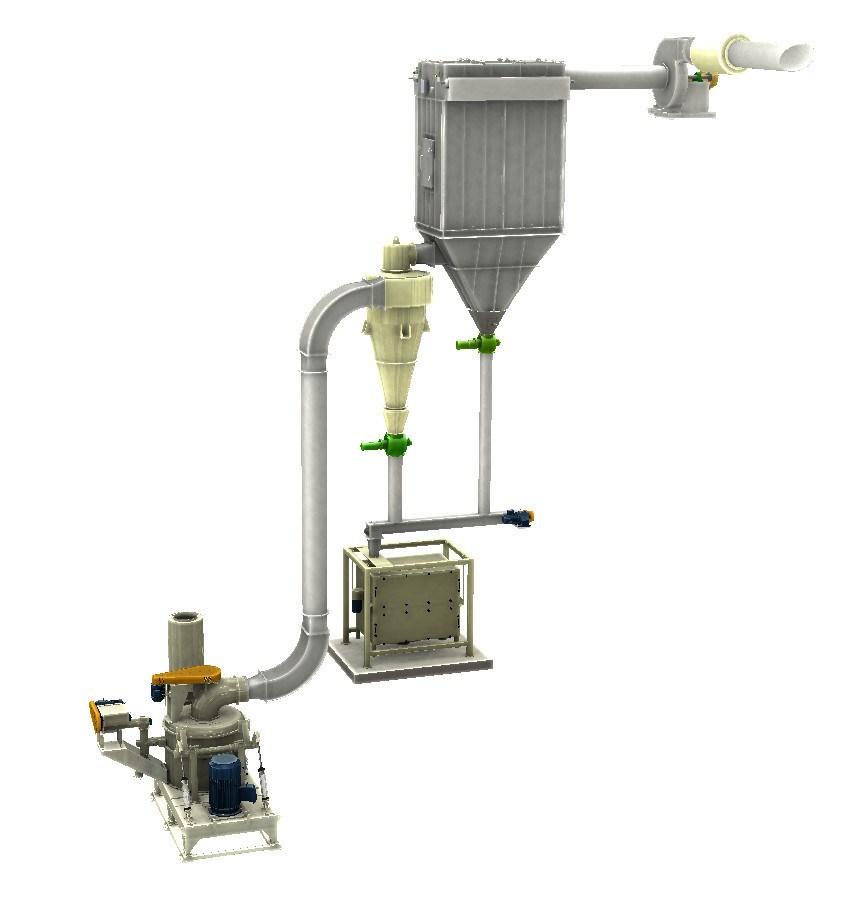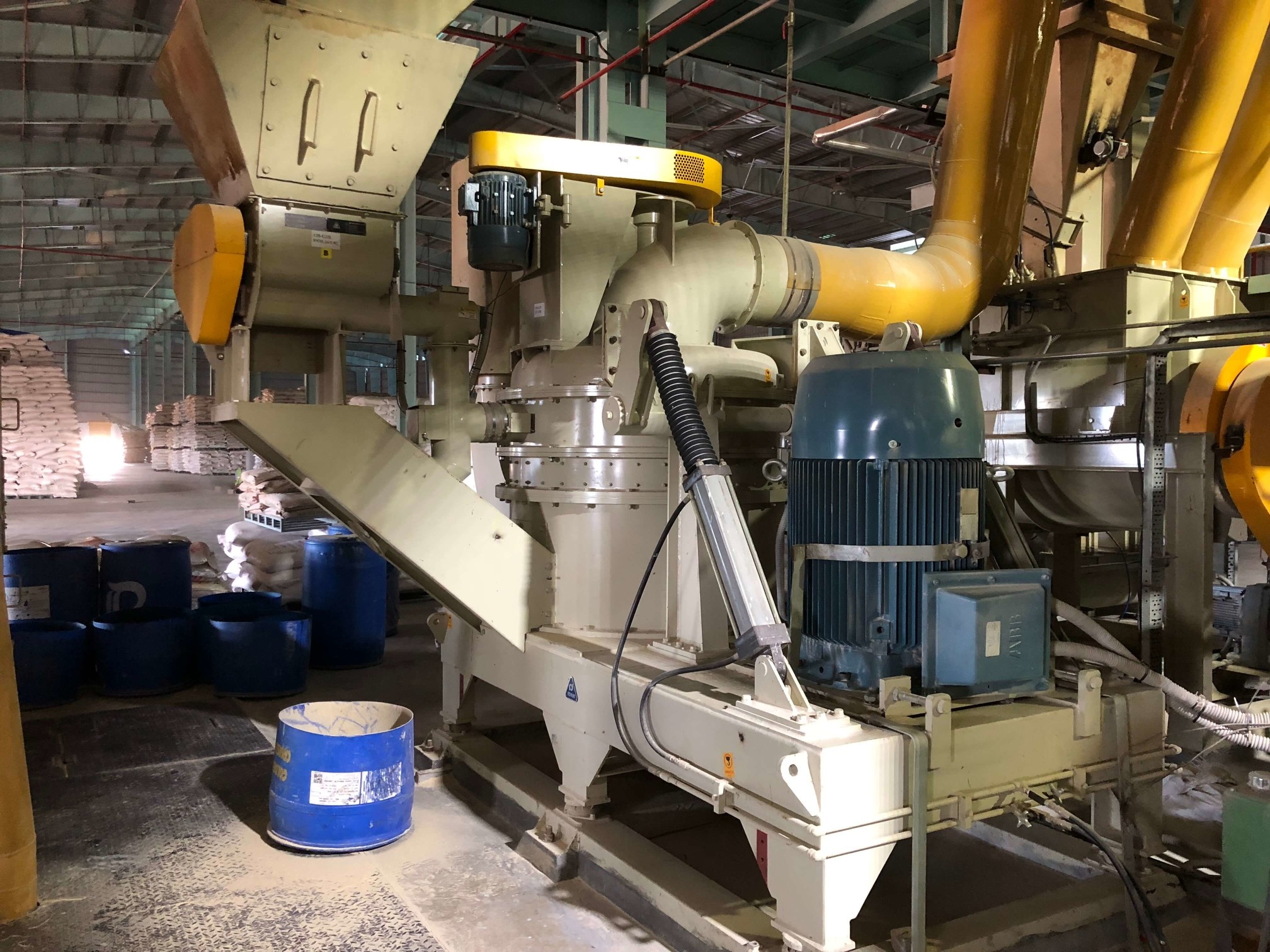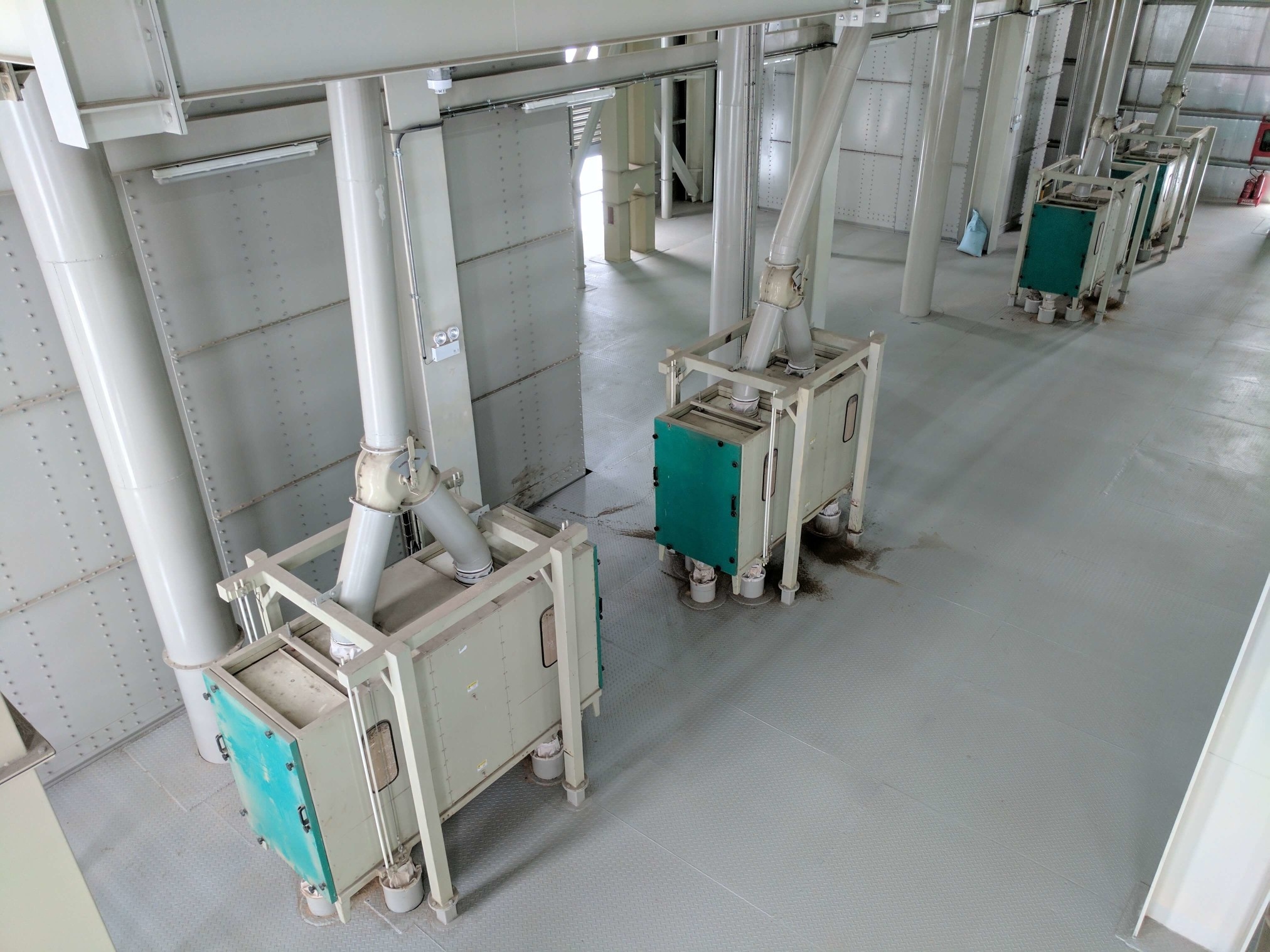IDAH Pulverizer Solution
In IDAH, we have manufactured and supplied two kinds of pulverizers: using screen type AP-series and no-screen type ZP-series. The earliest screen type pulverizing for producing eel feed was introduced in the 1970s by IDAH. We offer different screen type pulverizer models for each capacity requirement ranging from pilot plant scale (AP-2) to industrial scale (AP-10). The no-screen type pulverizer, model ZP-125, ZP-150, and ZP-170 is designed for industrial-scale production.

The Pulverizer System
A complete IDAH vertical pulverizer system consists of the material bin, the feeder, pulverizer, dust cyclone, dust filter, suction fan, and plansifter.
- Material entered the grinding chamber gradually and continuously through the feeder
- In the grinding chamber, the rotating hammer and the static liner will continuously apply the pounding force to break the material into small particles
- A turbine-like material separator will grade the material, only the fine material can pass through
- Cyclone will separate heavier ground material from the air streams and enter the plansifter, dust filter separate ultra-fine material from the airstream
- Fine material will be discharged and goes to the plansifter

Benefits of Ultra-Fine Powder
When there is a demand to produce small pellets or require a smooth pellets surface appearance, a pulverizer can become handy. Many producers aim to obtain ultra-fine powder (up to 80 mesh/177 µm). There are some benefits of having fine powder:
- Increase steam penetration for hydration and heating
- The ultra-fine particle can increase the production rate
- Increase bulk density of the pellets
- Increase the smoothness of the pellet surface
- Better inter-particle adhesion
- Reduce friction on the molding die surface


The Purpose of Plansifter
The purpose of the plansifter is to separate larger particles from the powder (predominantly fibers). Fiber is light and flexible, so it is hard to break during contact with the hammer. Fiber separations are commenced in the pulverizer. Depending on the type of feed to be produced, fiber may or may not be directed back to the pulverizer for further grinding. With the existing system, the fineness of the ultra-fine powder may reach up to 80 mesh, 98% pass.

